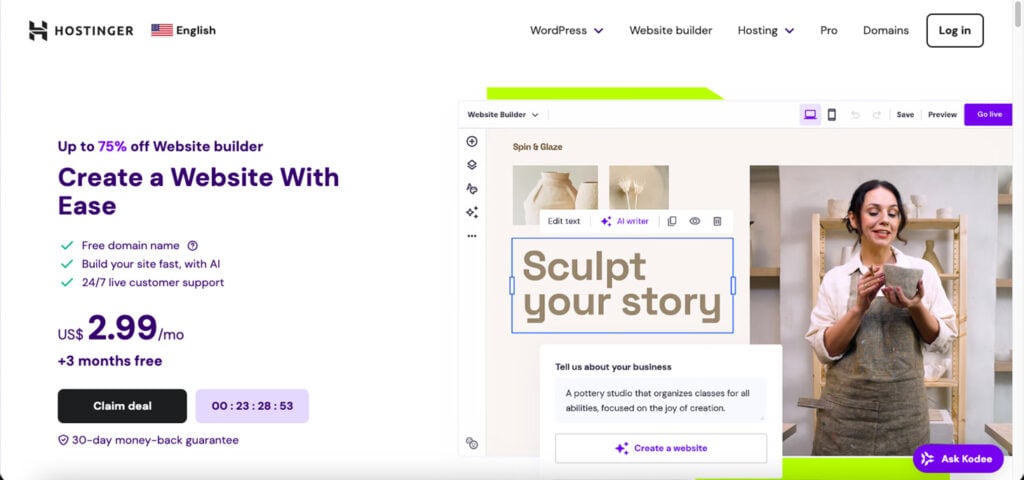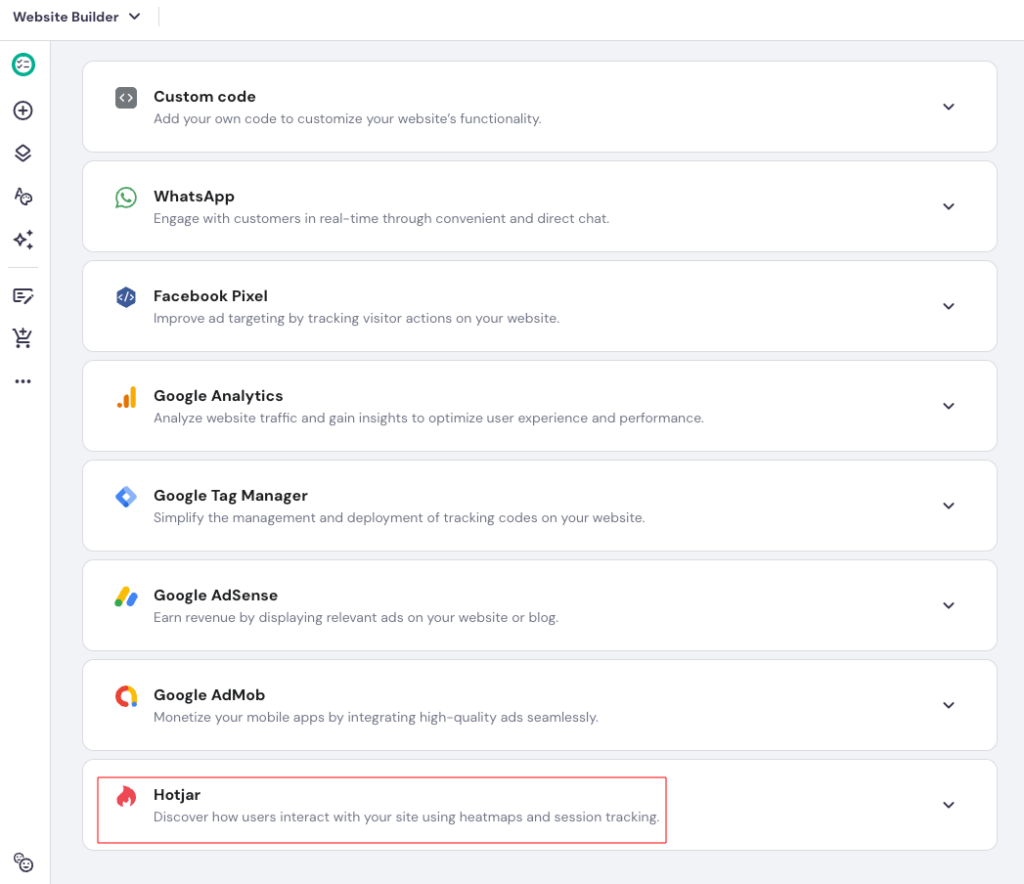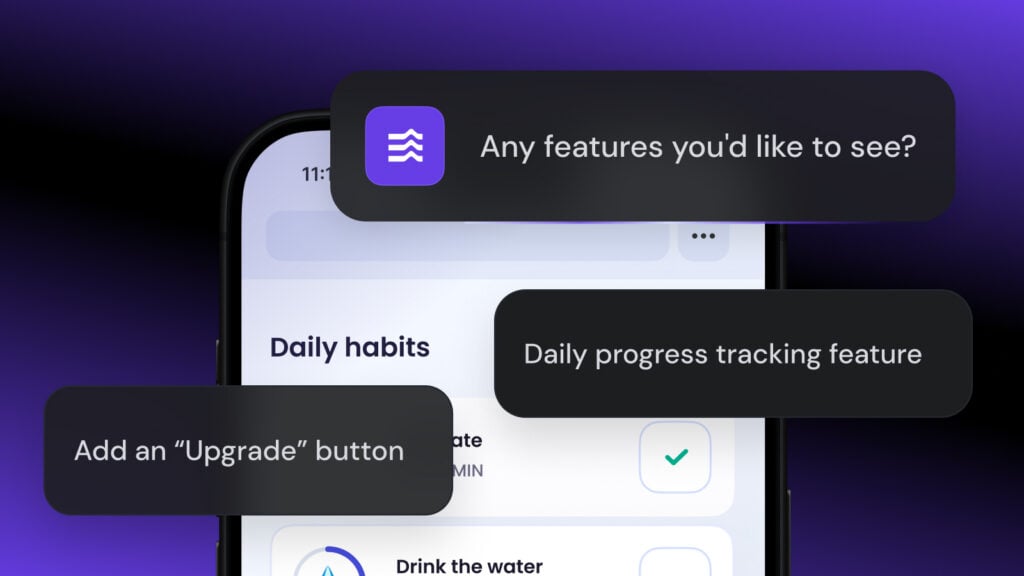Jun 28, 2025
Rea G.
13min Read
How to scale an ecommerce business: Key strategies and tactics

Scaling an ecommerce business means strategically increasing your operational capacity, marketing reach, and product offerings while maintaining profitability and customer satisfaction.
Unlike the traditional growth strategies, scaling doesn’t require significant investments and generally focuses on maximizing efficiency through optimized workflows and processes.
This article explains how to scale an ecommerce business using proven strategies and outlines common challenges, along with the tips for overcoming them.
The difference between growth and scaling
Growth typically means increasing revenue, customers, or sales, but with proportional increases in resources and costs.
Scaling, on the other hand, increases revenue or output without proportionally increasing costs, making it more efficient and profitable.
Understanding the difference helps you choose the right approach for the specific ecommerce business stage you’re in.
For example, if you’re still building customer interest, hiring in marketing is a growth strategy that can help increase brand awareness.
Once you have traction, improving internal processes like automating order fulfillment allows you to handle more customers without significantly increasing costs, and that’s scaling.

The foundation for scalability
Starting with a solid foundation is the key to successfully scaling an ecommerce business. A solid foundation means having a clear direction, data-driven insights, and a strong understanding of your audience and market.
Define your vision and set clear goals
Your vision defines what success looks like, while goals are the measurable steps to achieve it.
For example, if you’re selling eco-friendly cosmetic products, your vision might be to become a leading eco-friendly cosmetics brand.
To set realistic goals aligned with your vision, assess where your online business currently stands. If you currently hold 3% market share in the eco-friendly cosmetics category, your goal can be to increase this to 8% within 12 months through targeted marketing campaigns and strategic retail partnerships.
Analyze your current performance and identify key metrics
Use tools like Google Analytics or your ecommerce platform to track key metrics and identify what’s helping or hurting your business:
- Conversion rate – the percentage of visitors who make a purchase
- Average Order Value (AOV) – the average spend per transaction
- Customer Acquisition Cost (CAC) – marketing spend divided by new customers
- Customer Lifetime Value (CLTV) – total revenue expected from one customer
A low conversion rate can signal issues with your site, products, or messaging. A low AOV can mean missed chances to upsell, bundle, or offer free shipping at a minimum spend.
Finally, a high CAC paired with a low CLTV might point to poor retention or inefficient ad spending.
A good rule of thumb is to aim for a CLTV that’s at least three times your CAC. This helps ensure you’re not just covering costs but generating enough margin to grow sustainably.
Understand your target audience and market potential
68% of consumers want a personalized customer experience, according to a Zendesk report. Meeting that demand starts with understanding your audience, which involves:
- Identifying your ideal customers and their pain points to refine your messaging
- Reviewing purchase data and feedback to improve your products or services
- Monitoring forums and social media to see what your audience is discussing
Understanding your audience helps guide your marketing, branding, and product decisions. Once you have a clear picture of who you’re targeting, estimate your market potential:
Market potential = potential customers × average purchase value
For example, if you sell skincare products online and your research shows about 500,000 potential customers in your target market, with each spending an average of $60 per year, your market potential would be:
$30 million = 500,000 × $60
This gives you a realistic view of whether a market is worth scaling into.
Key strategies for scaling your ecommerce business
Ready to scale your ecommerce business? These four strategies show what to prioritize, how to implement them, and how to track results.
Optimize your online store for conversion and scale
According to Statista’s report on online shopping behavior, cart abandonment is rising, with global rates averaging 70.19%. To boost sales, your ecommerce store must be optimized for conversion.
Start by fixing two common issues that hurt customer engagement and conversions: slow load times and poor navigation.
Check your site speed and mobile usability
Run your website through Google PageSpeed Insights to find performance problems.

Scores below 50 mean your site is slow. Follow PageSpeed Insights’ recommendations to improve performance based on your specific issues.
Improve site navigation
Make sure key pages like Shop, Cart, and Product Categories are reachable within a few clicks. According to website user behavior statistics from Forbes, 61% of visitors leave if they can’t find what they want within five seconds.
Tools like Hotjar help identify navigation issues by showing where users click, scroll, or drop off. If you use Hostinger Website Builder, Hotjar is available as a built-in integration.

Just open your website settings and go to the Integrations section to enable it.

Pro tip
Aside from useful built-in integrations, Hostinger Website Builder also helps you optimize for conversion with fast-loading, mobile-ready templates and an AI-powered search engine optimization (SEO) assistant to improve your site’s structure, visibility, and ranking potential.
How to measure the effectiveness?
Track your progress using these key metrics:
- Conversion rate – are more visitors buying?
- Bounce rate – are fewer visitors leaving after one page?
- Cart abandonment rate – are more people completing purchases?
- Average session duration – are visitors staying longer and exploring more?
Implement effective marketing and sales strategies
A balanced mix of email, social media, content marketing, ecommerce SEO, and paid advertising helps you attract new customers and stay connected with existing ones.
How to do it:
Each channel offers a different way to scale the sales volume. Here’s how to use them effectively:
- Email marketing. Automate important emails like cart reminders and product suggestions to boost sales, especially during promotions like Black Friday. It’s a simple way to increase revenue without spending anything extra.
- Content marketing. Use AI to create an effective ecommerce content marketing strategy. Speed up ideation, trend research, and content writing without additional costs. In fact, many free AI website builders come with AI content creation features.
- SEO. Use tools like Ahrefs to find search terms your audience uses. Then optimize headings, product titles, and meta descriptions so your pages rank. While it takes time, this steadily increases your visibility without ongoing spending.
- Paid advertising: Start with Google Ads to reach people actively searching for products like yours. Use keywords related to your bestsellers and run search or shopping campaigns. For example, if you sell skincare products, target terms like “best beginner-friendly retinol” so your ad appears when shoppers are ready to buy.
- Social media marketing. Use automated scheduling tools to plan and publish content across platforms. This helps you stay active online and grow your reach without needing to post manually every day.
How to measure the effectiveness?
Track these KPIs to gauge what’s working:
- Email open and click-through rates (CTR). These show how engaging your emails are. For ecommerce, email marketing benchmark statistics show an average open rate of 29.81% and a CTR of 1.74%.
- Organic traffic growth. A steady rise means your SEO and content are working and attracting the right audience.
- Conversion rate. Most ecommerce stores convert 2% to 4% of visitors.
- Return on ad spend (ROAS). Shows how much revenue you earn per dollar spent. A good ROAS for ecommerce is 2.87:1, meaning you earn $2.87 in revenue per $1 spent.
- Social media engagement rates. Track likes, comments, shares, and saves to see how well your content connects. The average engagement rate for consumer goods and retail is around 3.0% on Instagram and about 1.0% on Facebook.
Suggested reading
Want to learn more about planning and improving your campaigns? Check out our Ecommerce marketing guide.
Leverage automation and technology for efficiency
Automation helps you manage customer inquiries, inventory, and marketing follow-ups. It saves you time and improves efficiency..
How to do it:
Use tools that streamline your ecommerce operations:
- Customer relationship management (CRM) systems. CRMs automate lead tracking, segmentation, and reminders. Zoho CRM, for example, keeps sales and customer communication in one place so you don’t miss leads or repeat buyers.
- Inventory management software. These tools auto-update stock, send low-stock alerts, and sync availability across platforms. For example, Cin7 connects your store with marketplaces like Amazon and Etsy to help prevent overselling.
- Customer service tools. Helpdesk platforms and chatbots organize support tickets and handle routine questions. For instance, Gorgias automates replies to FAQs like shipping times and returns, speeding up response times.
How to measure the effectiveness?
Gauge whether your tools are working by tracking these indicators:
- CRM tools. Track whether lead follow-ups are more consistent, customer interactions are better organized, and retention is improving.
- Inventory software. Check for fewer stock-outs, overselling issues, and manual updates across your sales channels.
- Customer service platforms. Look for shorter response times, faster ticket resolution, and higher customer satisfaction scores (CSAT).
Focus on customer retention and loyalty
Loyal customers tend to spend 67% more than new ones. Prioritizing retention gives your store long-term stability rather than short-lived sales spikes.
How to do it:
Here are five ways to encourage repeat business:
- Create a loyalty program rewarding repeat purchases, referrals, and social engagement.
- Personalize offers using purchase data for tailored suggestions, birthday discounts, or early access to launches.
- Deliver consistent post-purchase experiences with branded tracking pages – tools like AfterShip help customize these to encourage returns.
- Run win-back campaigns, such as a “We Miss You” email with a 20% discount after 90 days of inactivity.
- Ask for customer feedback via reviews or surveys, and offer rewards for participation.
How to measure the effectiveness?
Track these key metrics with Google Analytics, your ecommerce platform, or survey tools:
- Repeat purchase rate. Measures the percentage of customers who make more than one purchase. It focuses on buying behavior and shows how well you’re encouraging customers to come back and place additional orders.
- Returning customer revenue. Compares how much of your revenue comes from repeat buyers versus new ones. An increase means more of your revenue is being driven by loyal customers.
- Customer retention rate. Shows the overall percentage of customers you retain over a set period, regardless of how often they buy. It reflects your ability to maintain ongoing relationships, whether through engagement, service use, or repeat transactions. Higher retention over time means your strategies are working.
- Net Promoter Score (NPS). Gauges how likely the customers are to recommend your brand. A solid score typically falls between 40 and 60, although anything above 20 is still a positive sign.
Advanced tactics
If you’re ready to scale beyond the basics, consider expanding to new platforms, launching new products, forming brand partnerships, or entering international markets.
Let’s see what each tactic involves, along with the benefits and risks.
Explore new sales channels and marketplaces
Selling on platforms like Amazon, Etsy, Walmart, or eBay – and social media platforms like TikTok Shop, Facebook Shops, or Instagram Shopping – can broaden your reach and drive sales.
When deciding where to expand, consider:
- Where your ideal customers already shop
- Channels with lower fees or higher margins
- Platforms where your competitors are active
Advantages of this approach:
- Greater visibility. Reach new audiences beyond your site.
- More stability. Diversify revenue streams.
- Stronger credibility. Being present on multiple platforms builds trust.
Potential challenges:
- Platform fees. Expect commission cuts on most sales.
- Limited branding control. Customization is restricted.
- Inventory complexity. Syncing stock across channels requires robust tools.
Expand your product line strategically
Once the demand for your products is steady, revenue is consistent, and operations are running smoothly, you’re ready to grow your product line. Here’s how to approach it:
- Research customer needs. Use feedback, purchase trends, and market data to identify what your audience wants next. If you’re planning to expand by sourcing new items, you’ll also need to explore how to get vendors for ecommerce website to secure reliable suppliers that align with your brand.
- Stay aligned with your brand. Start with variations of your bestsellers or products that complement your existing lineup. For example, if you sell digital planners, consider adding a habit tracker, a journal, or a calendar.
- Set smart prices. Base your pricing on past performance, customer expectations, and competitor rates. Test different price points to find what works.
- Launch and adjust. Roll out new products gradually, monitor performance, and refine based on results.
Advantages of this approach:
- Broader reach. More products help meet different customer needs and attract new segments.
- Increased revenue potential. Adding complementary products creates upselling and bundling opportunities that increase AOV.
- Sustained market traction. Continuously offering new, relevant products helps you stay ahead of competitors and maintain visibility in a crowded marketplace.
Potential challenges:
- Inventory complexity. More products mean greater potential for unsold stock. Without the right inventory tools, tracking stock levels, order data, and fulfillment becomes more difficult.
- Forecasting issues. New items lack historical data, making demand harder to predict.
- Operational strain. Managing more product types can increase complexity across fulfillment, customer service, and inventory systems, especially without automation.
Build strategic partnerships and collaborations
Teaming up with businesses that share your audience or goals can help you scale more efficiently by reaching more customers without increasing your spend. There are two main approaches here: joint marketing with other brands and collaborations with influencers or affiliates.
Marketing and brand collaborations
Partner with businesses that target a similar audience but offer different products. For example, if you sell personalized leather notebooks, you might collaborate with a store selling desk accessories. Try tactics like:
- Cross-promotions. Feature each other’s products in newsletters or social media posts.
- Co-hosted giveaways. Run joint contests to grow followers and generate buzz.
Influencer and affiliate partnerships
Work with influencers or affiliates who can introduce your brand to new audiences.
- Sponsored posts or product gifts. Send a free product in exchange for a feature on their TikTok or Instagram.
- Affiliate partnerships. Set up a simple system that lets partners earn a percentage of each sale they refer.
- User-generated content (UGC). Ask customers or creators to share how they use your product, then repost it as social proof.
Advantages of this approach:
- Reach new customers. Collaborating with another brand gives you access to their audience, helping you grow without paying for traditional ads.
- Build trust faster. Working with a reputable partner boosts your credibility – customers are more likely to trust you if they already trust your partner.
- Keep customers coming back. Bundled offers, shared perks, or joint promotions provide more value to customers and encourage repeat purchases.
- Lower your risk. When you team up, you share the cost and risk of trying something new, whether that’s launching a product or testing a new market.
Potential challenges:
- Finding the right partner. Identifying a business that complements your brand, shares your values, and aligns with your goals requires time, research, and sometimes trial and error.
- Misaligned goals or brand identity. If values, messaging, or business objectives aren’t aligned, the partnership can confuse customers or weaken your brand. Misalignment can also lead to conflict or underperformance.
- Dependence on partners. Relying too heavily on a partner for traffic, exposure, or sales can limit your independence and create long-term risks if the partnership ends or underdelivers.
- Operational and logistical complexity. Managing shared responsibilities like inventory, customer service, or order fulfillment between brands adds complexity. Clear roles and coordination are essential for smooth execution.
- High coordination effort. Effective partnerships require trust, time investment, and consistent communication from both sides – especially during setup and execution.
International expansion considerations
International expansion is a smart next step when your online business shows signs of outgrowing its local market, such as:
- Consistently high local sales with limited room for further business growth
- Frequent international traffic or shipping requests
- Strong performance in culturally similar regions
- The ability to handle increased taxes, logistics, and fulfillment complexity
How to prepare your ecommerce business for international markets:
- Research your target markets. Analyze customer behavior, local competition, cultural preferences, and pricing expectations. Make sure you understand language requirements, legal restrictions, and region-specific logistics challenges before committing.
- Choose the right tool. Use an ecommerce platform that supports international features like multi-currency, language switching, and localized payment methods.
- Localize your marketing strategy. Tailor your website and campaigns to fit each region. This includes using culturally appropriate visuals and messaging.
- Deliver strong support and service. Offer multilingual customer support or chatbot assistance and clear return and refund policies.
Advantages of this approach:
- Access to new audiences and markets. Expanding globally introduces your brand to untapped customer segments, driving additional sales opportunities.
- Diversified revenue streams. Operating in multiple regions reduces dependence on a single market and provides financial stability during local slowdowns.
- Extended brand visibility. Entering global marketplaces increases exposure and positions your brand alongside international competitors.
- Higher sales potential during global holidays. Participating in local sales events and regional holidays boosts seasonal revenue.
- Global feedback loop. Serving international customers provides insights that can help improve your products, marketing, and overall customer experience.
Potential challenges:
- Complex regulations. Each country has its own tax laws, customs processes, and customer data protection rules that must be followed.
- Higher fulfillment costs. International shipping, duties, and delays can eat into margins without careful planning.
- Language and cultural barriers. Miscommunication or tone mismatches can hurt engagement or damage your brand image.
- Customer service expectations. Different time zones and languages require expanded support capabilities.
- Inventory management complexity. Tracking stock across countries or warehouses demands strong backend systems.
Common challenges in ecommerce scaling
Here are some common issues you might face when scaling your ecommerce business, along with tips for solving them.
Adapting to new market dynamics and competition
Expanding your ecommerce business to new markets brings tougher competition and shifting consumer behavior. What worked in your home market may not translate directly, and standing out becomes harder as saturation increases.
What you can do:
Conduct market research to understand consumer preferences and how local brands are positioned. Study competitor stores, reviews, and product listings to assess pricing, packaging, and promotions.
For example, a skincare brand expanding internationally might discover that buyers in the new market prefer fragrance-free formulas, travel sizes, or value bundles.
Successful case study:
IKEA re-entered Japan in 2006 after conducting over 100 home visits in Tokyo to study how people live, organize their homes, and shop for furniture.
The company realized its original model – large flat-pack items and do-it-yourself assembly – didn’t align with Japanese consumer expectations or space limitations.
IKEA adapted by resizing products for compact apartments and offering assembly services.
It also localized marketing and customer service to reflect Japanese values around trust, convenience, and precision.
This research-first approach helped IKEA stand out in a competitive market by aligning its brand experience with local needs.
Managing increased demand and inventory
Growth makes inventory harder to manage. Systems that worked early on may struggle under higher volumes, causing stockouts, delays, or overstocking.
What you can do:
Use past sales data to spot trends and prep inventory before peak periods. Tools like Peak’s Inventory AI can forecast demand, flag risks, and guide restocking.
For example, if a kitchen organizer sells out every December, AI alerts can help you restock in advance. This shifts your approach from reactive to proactive.
Successful case study:
Amarra, a formalwear brand based in New Jersey, has integrated AI in its ecommerce operations to enhance its inventory management system as it expanded to serve over 800 global retailers.
By using an AI-powered system that predicts stock needs based on historical data and seasonal trends, the company has achieved a 40% reduction in overstocking.
These improvements have contributed to more efficient operations and better product availability across its ecommerce channels.
Maintaining customer service quality during growth
As orders increase and your customer base expands, it becomes harder to provide support to every customer. Still, it remains essential because poor customer service can damage your brand and cause revenue loss.
What you can do:
Use chatbots to supplement your customer service team. Chatbots can handle high volumes of routine inquiries, freeing up your team to focus on complex issues like delayed shipments, refund disputes, or product troubleshooting.
By automating responses to order tracking, returns, FAQs, and product questions, you’re able to maintain fast, consistent service even during rapid growth.
Successful case study:
Alibaba scaled its customer service across millions of users by integrating AI chatbots.
These bots resolved around 75% of online and 40% of phone hotline inquiries, drastically reducing the workload for human customer service agents.
As a result, Alibaba boosted customer satisfaction by 25% and saved over $6 million annually in support costs.
Conclusion
Scaling an ecommerce business is about building a smarter, more efficient operation that can handle higher demand without overwhelming your resources.
Start with the fundamentals: a clear vision and actionable goals, knowing your metrics, and understanding your audience.
Once you’ve built a scalable foundation, implement strategies that optimize your ecommerce store for conversion, leverage automation tools, and focus on customer retention.
Many of these processes can be seamlessly facilitated with Hostinger Website Builder, which offers scalable hosting to help you manage increased traffic as you expand, built-in AI tools like the AI Writer to help you create product descriptions that drive sales, and marketing integrations such as WhatsApp to engage with customers.
How to scale an ecommerce business FAQ
What is scaling in ecommerce?
Scaling in ecommerce means growing your online store’s sales without significantly increasing your expenses. It’s about improving your systems and automating tasks so you can handle more orders and customers without overspending.
How to evaluate an ecommerce business?
Start by looking at your store’s numbers: conversion rate, average order value, and customer acquisition cost. Pay attention to how much traffic you’re getting, what customers are saying, and whether your current setup can keep up as sales increase.
What are the essential foundations to set before scaling my online store?
Make sure your store runs smoothly and converts well. Website development is key. Choose the right platform, use reliable hosting and optimize your design.
All of the tutorial content on this website is subject to Hostinger's rigorous editorial standards and values.




